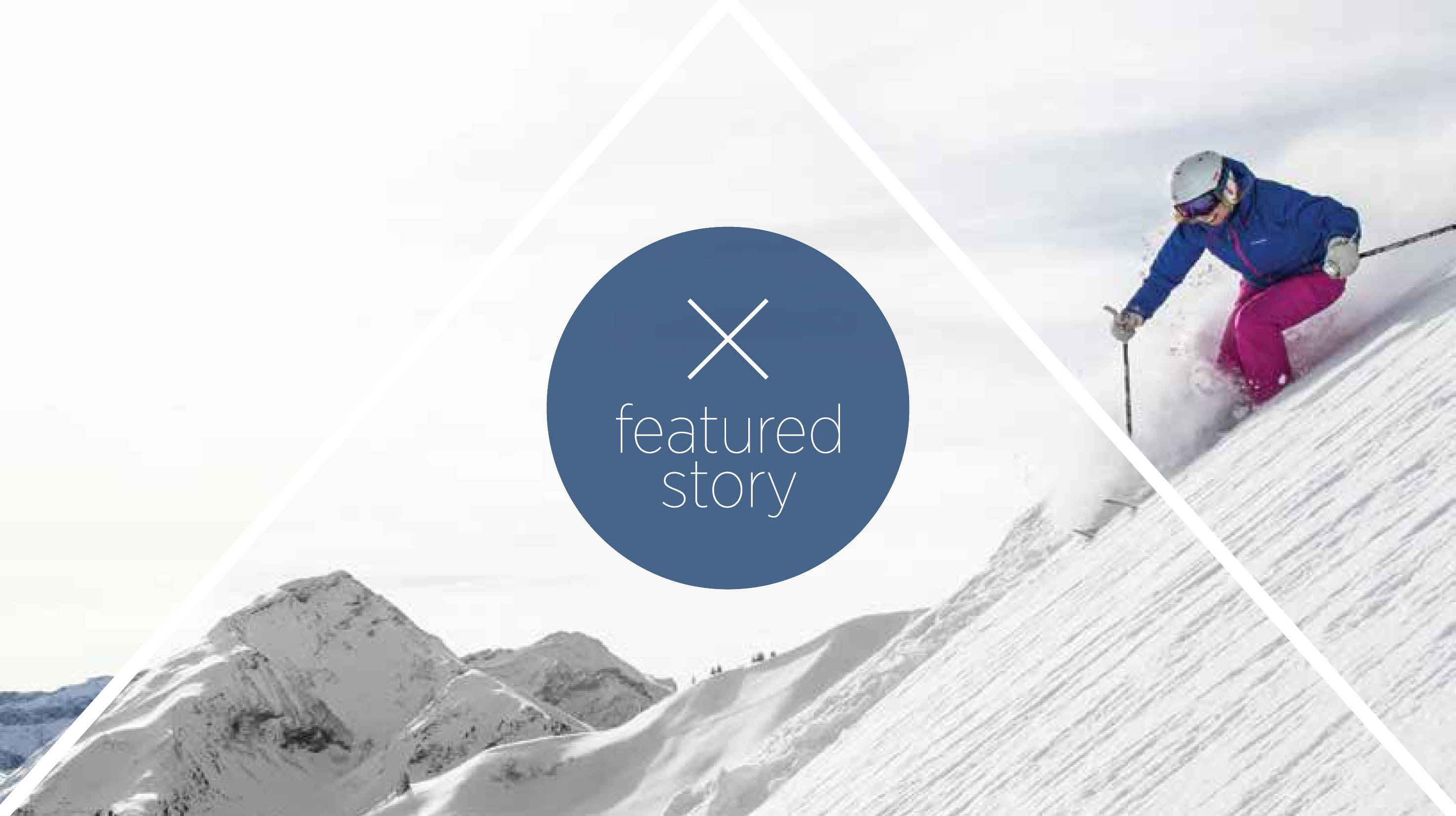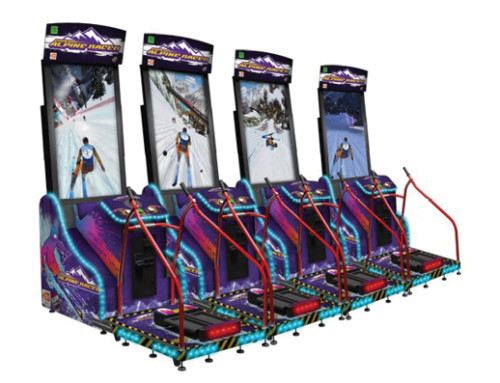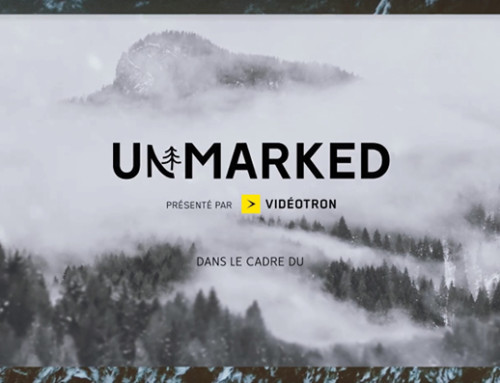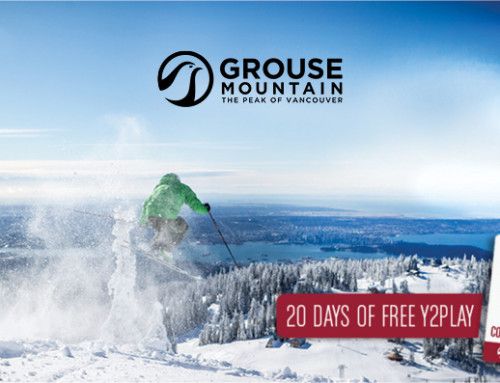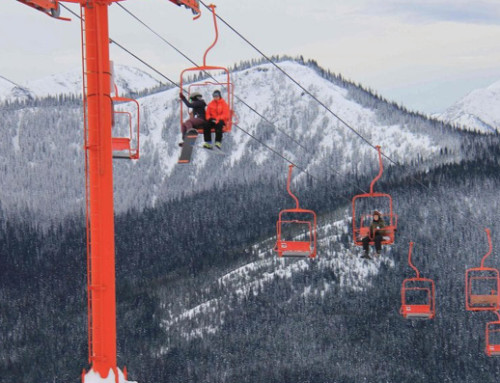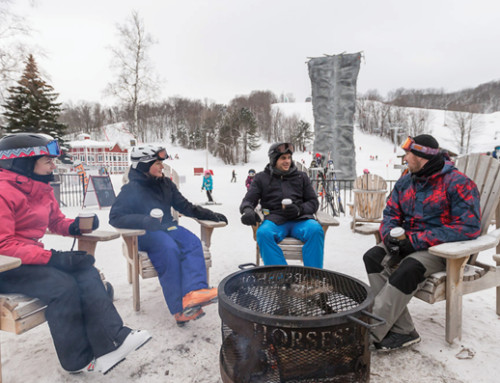BY: Claire Challen PHOTOGRAPHY: Paul Morrison
Doors of the Sun
WITH OUR RENTAL VAN STUFFED FULL OF GEAR, videographer LG Palmer, S-Media producer Ashley Herod-Tait, photographer Paul Morrison, and I headed off in search of coffee. As I took in the views of Lake Geneva and lush pastures dotted with farmhouses along the AutoRoute, I found it hard to believe that we could be skiing later today. Exiting toward Portes Du Soleil, zipping around a final roundabout and veering onto a tiny road, we began climbing into the mountains. Snow coated the hillsides alongside the twisting roads that were barely wide enough for our boxy rig to scrape by should a large vehicle come along. Villages built into the hillsides and weathered wood chalets sat so close they were almost within reach. As we pulled into the tiny driveway of Art Boutique Hotel Beau-Séjour, in the historical village of Champéry, it began to snow. We immediately scurried down Grand-Rue for lunch at Le Nord, a cozy post-and-beam space a three-minute walk from our hotel. Despite our jetlag, we managed to decipher the French menu with a little help from our patient waiter and savoured a variety of röstis, the first meal of many in the delightfully decadent Swiss tradition.
Chivalrous as usual, the boys sussed out the resort conditions after lunch, reporting low visibility and goggle-coating freezing rain. I was feeling slightly under the weather and opted out of skiing. Depositing armloads of gear in my quaint room and eyeing the cozy twin combo topped with Swiss down comforters, I allowed myself the luxury of a daytime nap, knowing Ashley was probably doing the same thing in the next room. Later, hearing giddy tales from the boys of high-speed turns down unknown slopes, blinded by the fog and the danger factor compounded by a lack of sleep, I thought perhaps I’d missed out a little.
Champéry’s main cable car passes directly over the hotel, rising more than 1,200 vertical metres above the village into the heart of the Portes du Soleil ski area, where one lift pass provides access to 12 linked resorts in Switzerland and France, with 209 lifts, 700 kilometres of piste and unlimited off-piste. From the top of the Champéry tram, skiers connect with the four Swiss resorts of Champéry: Les Crosets, Champoussin and Morgins. To the west lie eight French resorts, including Avoriaz and Châtel.
That evening, we discussed the next day’s plan in the hotel’s La Vieux-Chalet restaurant over seared local beef grilled mid-restaurant on an open fire. Perfectly sated after a variety trio of shared crèmes brûlées, we watched as, much to our delight, heavy snow began to fall, visible in the soft glow of the outside lights.
Grey skies and low visibility greeted us in the morning, as did fresh snow and the energetic Andy MacMillan from Abbotsford, BC. A denizen of the Alps for the past 25 years, Andy owns La Crevasse, Champéry’s only nightclub, located within crawling distance of anywhere in town. Spending his daylight hours as a mountain tour guide whenever possible, he puts his ripping ski skills to good use. Once Andy ensured we had safety gear, including probes and shovels, and that our beacons were transmitting, he took off in a flash, challenging us to keep up.
After a morning spent dropping into snowy pockets and shoots just off the cat-tracks in this ski-wherever-you-wish country, our explorations led us to the crossroads of Avoriaz and Châtel, where we skied to Les Rhodos in Village des Chèvre, a summertime mountain pasture for goats. Following escargot and a warming vin chaud with Andy’s recommendation of chanterelles a la crème maison, I felt guilty for taking up valuable real estate in the chalet for so long. Looking around, though, I saw most people were taking their lunches seriously. We staggered out two hours later. The top of Le Pas de Chavanette, also known as the iconic Mur Suisse
[Swiss Wall] gives skiers the option to drop into France or Switzerland. Following closely behind Andy, we launched into the 40-degree slope toward Les Crosets on the Swiss side, making our silent debut on the wall. Normally topped with De Chevaux-sized moguls, today it was blanketed in thigh-deep powder. To celebrate our conquest of the Wall, we skied to Buvette des Clavets, an inviting trail side chalet. As the sole guests, we had no problem quickly acquiring plus de vin chaud, but guests can book ahead for fondue and an exciting ski down through the darkness – guide recommended.
An untracked snowfield greeted us off the back of the chalet. Weaving along the exit trail’s switchbacks, we arrived at the base in an area known as Grand Paradis and popped into a yurt off the parking lot. Andy showed up a couple of seats shy and squeezed us all into a borrowed Subaru. After unraveling our intertwined bodies from the front and peeling Paul and LG the Friendly Giant from the back, we clattered our way onto the quiet village street. We returned to Le Nord for an evening meal sans jetlag. At a corner table under rustic miniature lanterns in a room abuzz with happy diners, we dove into sensational gooey raclette and salt-pressed salmon. I was encouraged (forced) for the second evening to partake in the génépi de Champéry – locally prepared hooch made by steeping alpine plants in pure grain alcohol – as it might knock out my nagging cold.
Day two brought sunshine, and with it, the Switzerland of my imagination. Photos I’d seen of the region boasted astounding scenes like this. From my balcony I could see the Dents du Midi and Dents Blanches. Atop the tram, the 360-degree mountain views were breathtaking. We alternated between firm groomers and hiking into steep powder patches wherever we chose, not once being told, “You can’t ski there.” Pointing this way and that to peaks, open bowls and rocky-cliffed lines across the valleys, Andy told us he discovers new lines each season; the nearly limitless opportunity for off-piste skiing is a large part of what keeps him here. As I made my final run of the day, the sky was a pink backdrop for my turns and the trailside chalets.
I could have skied into the evening, but incredible delicacies such as beef carpaccio and foie gras awaited at Champéry’s charming Café du Centre. We awoke on our third day to limited visibility and widespread lift closures, but our attention was diverted as we savoured the creations Beau-Séjours owner Sophie cooks up daily for guests – raspberry-topped meringue, cakes, pies and chocolate eclairs. Bellies full, we hopped on the train for the 10-minute ride north to Thermes Parc – Les Bains du Val-d’Illiez to float and rejuvenate in the natural hot springs. Massages provided further comfort after chasing Andy through the Alps for two days. We spent a quiet afternoon touring the village, stocking up on chocolate and wine at the local grocery store.
Rumours of too much cheese wreaking havoc on the internal workings prompted us to seek a casual one-course evening meal at Chez Joe. Owned and operated by Joel Leroux, a young Canadian snowboarder from Gasp., Quebec, the venue offers a great beer selection and beef and chicken burgers served in a laid-back atmosphere, with lower prices than the average restaurant in Champéry.
Comfortable chatter and savoury aromas filled the small space as we tucked in for a perfectly delicious meal. Switzerland is one of the wealthiest countries in the world, yet I was discovering a country rich in understanding that life’s simple joys are what really count. These folks work hard, but they also take the time for outdoor recreation and to share good food and wine with loved ones. Hard work in the fields fills plates with local vegetables and meats, and grottos produce the incredible cheeses in the Swiss fondues.
Kishtahd
As our time in the Portes du Soleil region came to a close, we travelled north to Gstaad. Switzerland travel is made incredibly convenient by the Swiss Rail GoldenPass. The line spans nearly 240 kilometres, allowing guests to travel from Lake Geneva in the south-western tip up to central Lucerne aboard panoramic trains. Seated in first class with camera one and camera two at my side and a couple of bottles of champagne at 10 a.m., life was grand. Foggy skies blotted out the distant peaks, but there were lovely villages right beside the tracks flanked by expansive pastures and homes dotting the hills. It was snowing heavily as the train arrived in Gstaad. Pronounced “Kishtahd” by locals and consistently mispronounced by all of us, this high-end village has accommodated the likes of Madonna and Elizabeth Taylor in its posh five-star hotels, yet offers far more than swanky lodging and designer clothing.
Three kilometres down the road from Gstaad lies the understated village of Saanen, where we spent an evening in the trendy 16 Art Bar, an old bell foundry turned restaurant with low ceilings and a menu that shifts with the seasons. Above the town sits the Hotel Solsana, our lodging. This three-star turreted castle-like structure is unique not only in architecture but also in that it caters to visually impaired guests with braille signage, open hallways and spacious rooms. A bit incongruously for Switzerland, it also has a bowling alley. On clear days, the hotel boasts a spectacular view of the valley and surrounding ski resorts.
A narrow farm road continues up beyond the hotel to the Sonnenhof, where we dined extravagantly on truffles and sea bass, gazing at the lights of the valley through the thickening snowfall. Though there are more than enough dining and shopping options to keep a person busy for days without ever stepping into a pair of ski boots, there happens to be a lot of skiing in Gstaad. It attracts beginner and intermediate skiers because of its lower elevations (most peaks top out at around 2,000 metres, with only the glacier at Les Diablerets rising to about 3,000 metres) while offering a large variety of terrain in its 220 kilometres of piste for those with a higher level of expertise. We discovered that this is a hidden gem for the die-hard skier, as it mainly attracts piste skiers, leaving the remarkably extensive and varied off-piste for those with powder-seeking radar.
In the nearby Saanerslochgrat – Hornberg ski area, we found a low-key base area with an unpretentious après yurt and simple roped pathways funnelling skiers toward the only lift – a tiny gondola with barely enough room for guide Bernhard Hauswirth and I on one side and LG and camera gear on the other. Rising 1,900 metres into the glorious sunshine, we arrived at an understated alpine restaurant with skiable terrain dropping off from all sides. With every signpost that morning leading to Saanen-somewhere else but none to Saanerslochgrat, we were late getting started. Late arrival normally causes panic in North American powder seekers, signalled by frenzied ski boot power walking, sneaky lift-line management, aggressive boot cleaning, and finally the powerful binding stomp leading to the poling, skating combo in an attempt to regain what has been lost. Even 15 minutes can be too late in North America. Yet here, I realized there was a considerable amount of terrain, few people – most sticking to the groomed slopes – and an unusual amount of fresh, untracked snow.
Dropping in behind the restaurant, we warmed up on a steep and deep pitch similar to cat or heli-ski alpine terrain. It was a fine start to a day of untracked pitches alternated with gradual intermediate slopes that required minimal effort, all with a high floating factor. After a quick change into the finest clothing we’d stuffed into our duffels, we entered the palatial five-star Alpina hotel. I climbed the grandiose staircase to Sommet, one of three restaurants within the hotel, wondering if there was a note beside our names stating, “Can’t afford to eat here.” I may not be able to frequent establishments like this on a daily basis, but it’s not difficult to recognize the ultimate in class and service. Every effort was made to ensure our table was satisfied: two visits from the head chef, endless education from our charming sommelier and seven exquisite courses. While we dined, the snow continued to fall heavily. As designated driver, I realized my inaugural European driving experience would be in five inches of snow. The van was a great rig, but it resisted steep, snowy roads, which happened to be what I’d be navigating to get back to our hotel. As I pulled over amidst yells of “No, No, No,” for a speeding cab on our single lane road, I knew my momentum was lost.
Trusting my driving or allowing his seven glasses of wine and génépi chaser to instill courage, a certain brave photographer splayed himself on the arrow slanted hood of the van, gripped the edge and yelled, “Gun it!” Safely back at the Solsana, I stared from my balcony at the fairy lights of the villages of Gstaad and Saanen.
Wasserngrat and Eggli
I threw back the curtains. It was going to be deep again. On the narrow farm road, we retraced the route we’d travelled by horse-drawn carriage two days earlier with our host Antje. We clamoured out in our ski boots to push the van after pulling off the road for a local heading into the village.
Sliding door open, we dove back in and made it up to the tiny four-row parking lot of Wasserngrat, a unique resort with one lift, no people and 25 centimetres on top of 25 centimetres. Steep, with a considerably smaller-than-average destination resort vertical of 625 metres and four marked trails, Wasserngrat was perhaps an unlikely candidate for an incredible day. Normally this terrain could be considered limited, but the snow kept replenishing itself, and we had only our own tracks to contend with until a handful of others arrived late morning. Bernhard told us that many locals and visitors stay in for another cup of coffee when it snows too much – they don’t get worked up about mopping up new snow. With huge accumulation and nobody but us all that interested, it was magic. It doesn’t get much better than looping lap after lap on the only lift and a mountaintop lunch at the Bergrestaurant Wasserngrat, capped with numerous helpings of meringue and thick triple crème. Even our trusty video and camera men briefly stopped slaving away for a couple of runs without backpacks of heavy camera gear.
We’d already been blessed with two incredible powder days in the Gstaad Mountains, and Mother Nature graciously granted us one more. Only a 10-minute walk from the centre of Gstaad, the easily accessible Eggli Resort welcomes skiers with a unique egg-shaped gondola. Contemporary skis and snowboards won’t fit in the racks, so you share the tiny space with your equipment. At its peak, Eggli sits at only 1,672 metres, making it an attractive choice for beginners and intermediates. Initially, it was so deep that no amount of tucking and poling could get me to high enough speeds to make any turns. Luckily, we found steeper slopes one lift ride up at Vorderes Eggli, where I watched as Ashley was instantly devoured by the snow. When LG, the tallest man on the mountain, disappeared with only goggles visible, I suspected this might be the deepest snow I’d ever experienced. As I rode the T-bar digesting a glorious lunch from the Bergrestaurant Eggli, Gstaad’s motto of “Come up, slow down” came to mind. People are encouraged to take time to unwind and enjoy the good life. I thought we were doing a fine job of following that advice. In North America, I could check snow accumulation statistics to determine how much snow had fallen overnight. Here, I was unable to find any snowfall sites to help me prepare. If I found any numbers, they were gross underestimates. I asked our guide, Karin Bach, why, and she replied that nobody here really wants to know. Too much snow could even be a deterrent for locals and vacationers wishing to stick to the groomers. Or, perhaps in the scrupulous Swiss way, reported snowfalls would be refuted as they discovered 15 centimetres on the lee side but only 10 on the other. Limited reporting avoids argument while serving up a daily surprise of more snow than the small crowds let on.
It was a week of slopes blanketed in snow with no competing for the goods, gorgeous scenery and villages, and three meals a day relished alongside riveting company. I didn’t think one could get to the slopes late morning and still find untracked powder, but I found just that in the thriving yet underrated Portes du Soleil and Gstaad. Resorts here are well developed, with high-speed lifts, yet retain their old-world charm and tradition. Villages, public chalets and restaurants are built into the mountains.
The mountains are a way of life in this classic alpine country; set right in the middle of the Alps, Switzerland is the essence of European skiing … with just a little more cheese.



